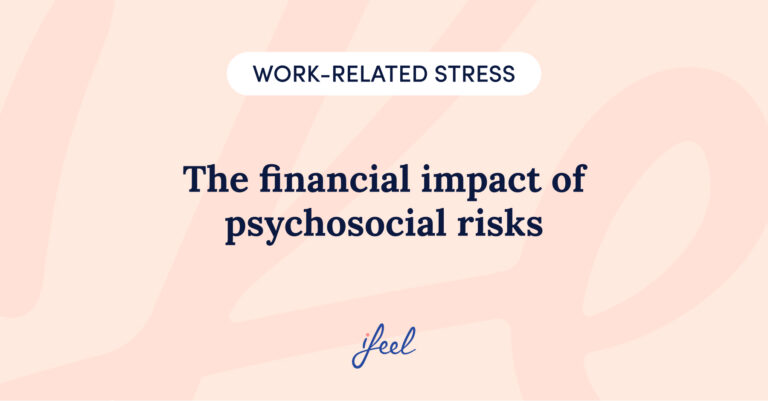Before tackling any problem, it is essential to define it clearly. In the business world, this is no different; transforming processes or strategies requires a precise understanding of the characteristics of existing problems, which will allow for the best plan to solve them to be developed.
In this sense, the key to truly understanding the challenges an organisation faces lies in interacting with those who are in direct contact with the business on a day-to-day basis: the employees. That is why it is essential to learn to listen to them.
But how? The best way to start is by strengthening skills such as active listening at work. Developing active listening at work is an essential skill that leaders and managers must cultivate. This skill allows them to unravel the roots of organisational challenges, facilitating a deep understanding that drives effective and sustainable change.
The ability to listen, understand and respond effectively to the needs and concerns of employees not only fosters an environment of innovation and collaboration, but also allows problems to be identified and solved before they become significant obstacles.
‘Communication is a continuous day-to-day task, but it is undoubtedly a key element for all of us to work towards a common goal.’
Why is active listening at work important?
Active listening is defined as the process of listening intentionally with the purpose of understanding, remembering and responding effectively to what is heard. In this context, active listening at work not only improves communication between teams, but also promotes an environment conducive to innovation.
Research shows that people spend approximately 55% of their time listening. However, it is the quality of that listening and not just the quantity that determines our success in the workplace. And, from the perspective of leaders, the importance of active listening at work goes beyond simple communication; it is an essential strategic tool.
Active listening at work strengthens the work culture and optimises both performance and decision-making. In a dynamic work environment, leaders must capture valuable information from those on the front line. By understanding the needs and concerns of their team, leaders foster an environment of trust, where employees feel valued and motivated to contribute their ideas.
Active listening at work also allows leaders to identify and resolve internal problems before they become significant obstacles. This practice promotes innovation by allowing fresh ideas to emerge from the team, offering creative solutions to complex problems.
Leaders who incorporate active listening into their work are also perceived as more accessible and open, which facilitates honest communication and improves employee morale and commitment, positively impacting talent retention.
At ifeel, we have developed an annual planner for enterprises, which offers a guide to strategies that will help you promote health and productivity throughout the year in your organisation. Download it for free!
Benefits of active listening at work
Active listening plays a crucial role in the development of organisational well-being. Organisations that value this practice tend to have a healthier work environment and lower staff turnover rates. Let’s look at its main benefits:
| Benefit | Description |
|---|---|
| Improvement of the work environment | Fosters a positive and respectful work environment. |
| Increased innovation | Facilitates the generation of new ideas and creative solutions. |
| Reduced conflict | Decreases misunderstandings and promotes effective problem-solving. |
| Increased job commitment and motivation | Promotes a sense of belonging and loyalty to the organisation. Employees who feel listened to are more motivated and committed. |
| Favours a positive environment in teams | Promotes a collaborative and respectful atmosphere, where employees feel valued. It also improves mutual understanding and strengthens relationships between co-workers. |
| Builds trust and improves self-esteem | Increases confidence and self-esteem, reinforcing commitment to the team and the organisation. |
| Minimises misunderstandings | Reduces errors and misunderstandings in tasks and projects by correctly interpreting the message. |
| Improves decision-making | Facilitates better decisions by understanding different perspectives and gathering information. |
| Allows you to anticipate conflicts | Captures verbal and non-verbal signals to foresee problems before they escalate. |
| Avoids prejudice | Fosters openness and reduces the influence of preconceived judgments. |
| Promotes interpersonal relationships | Contributes to building stronger bonds and trust between team members by allowing a better understanding of emotions and needs. |
| Increases productivity | Reduces time wasted on corrections, reinforcing team efficiency. |
How to promote active listening at work?
The practice of active listening is essential for leaders looking to improve communication and engagement in the workplace. Here are some effective strategies that leaders can implement:
1. Eliminate distractions
To ensure effective communication, it is crucial to create an environment free of distractions. Turn off electronic devices that may interrupt the conversation and focus your full attention on the speaker. This not only helps to avoid misunderstandings, but also shows respect for the person speaking.
2. Use non-verbal communication
Body language is a powerful tool to show that you are engaged in the conversation. Nodding, maintaining an open posture and using subtle gestures let the speaker know that you are paying attention. These non-verbal signals reinforce trust and empathy.
3. Reaffirm and paraphrase
Make sure the other person feels heard by periodically summarising what they have said in your own words. Ask questions to confirm whether you have understood correctly, which not only clarifies doubts, but also makes the interlocutor feel valued.
4. Make eye contact
Looking into the eyes of the person speaking helps to focus attention and demonstrates genuine interest. Eye contact builds trust and conveys a sense of safety and respect during the conversation.
5. Maintain a positive attitude
Approach each conversation with an open and positive mindset. It is important to be willing to accept what is said, even if you disagree. A positive attitude encourages empathy and improves the quality of the exchange.
6. Break down the information
When presented with a lot of information, it can be helpful to break it down into smaller, more manageable segments. By categorising key points, you can retain information better and review it later to clarify any questions.
7. Take notes
If you feel comfortable doing so, take notes during the conversation. Not only does this help you remember important points, but it also shows the speaker that you value their words and are engaged in the discussion.
8. Take advantage of technology:
Active listening is not limited to face-to-face interactions. Use technological means such as phone calls, emails and instant messaging to practise active listening, making sure you fully understand the message before responding.
The Leadership Lens🔎
Active listening at work is not just a skill, but an essential tool for organisational success. That is why leaders have the mission of systematically integrating it into the culture of the enterprise, starting with their own example.
In this sense, it is crucial that senior management shows a genuine commitment, facilitating training in communication skills and organising active listening exercises. By doing so, they not only improve internal communication, but also strengthen trust and collaboration in the team.
Practical Exercise: Regular feedback meetings
To start developing active listening at work, you have to practice it. In this way, through regular feedback meetings, organisations can create an effective channel for employees to share their ideas and concerns, promoting an environment of trust and collaboration. Here’s an exercise to get you started, following these steps.
1. Set a regular schedule: Organise regular meetings, for example, monthly or quarterly, where the main focus is feedback. This ensures that there is a consistent space for open communication and active listening.
2. Preparation and focus on solutions: Before each meeting, leaders should prepare an agenda that includes relevant topics to discuss. During the meetings, encourage all participants to share both challenges and possible solutions, thus promoting a culture of collaboration.
3. Creating a safe and open environment: It is crucial that leaders establish an environment where everyone feels comfortable speaking up without fear of retaliation. This involves practising active listening, showing genuine interest in what each member has to say and responding in an empathetic and constructive manner.
4. Performance analysis and continuous improvement: Use these meetings to evaluate individual and team performance. Active listening is essential here to gather feedback that helps identify areas for improvement, and to motivate employees to achieve their personal and professional goals.
5. Follow-up and action: After each meeting, it is important that leaders act on the feedback received. This not only demonstrates that employees’ opinions are valued, but also reinforces the culture of active listening as an integral part of how the team operates.
Implementing this exercise not only improves internal communication, but also strengthens team trust and cohesion, key elements for organisational success.

Unlocking enteprises’ potential
At ifeel, we know that the importance of active listening at work is evident in its ability to transform the work environment. By cultivating a culture where open communication and active listening are central pillars, organisations not only promote innovation and collaboration, but also reinforce team well-being and cohesion.
To help in this process, at ifeel we have developed an annual planner for enterprises, which offers a guide to strategies that will help you promote health and productivity throughout the year in your organisation. Download it for free!
In addition, our team of psychologists specialising in mental well-being has developed a mental well-being program for companies aimed at helping companies enhance employee engagement and boost productivity.
This collaboration allows HR managers to receive personalised, data-based advice on the most effective measures for detecting employee mental health issues and assessing the workplace climate. It’s the best way to understand their needs.
Moreover, ifeel’s corporate mental well-being solution offers employees a structured mental health care service tailored to their needs at any given time.
We hope you found this article on active listening at work interesting. If you want more information about our mental well-being solution for companies, simply request it, and we will contact your team soon.







